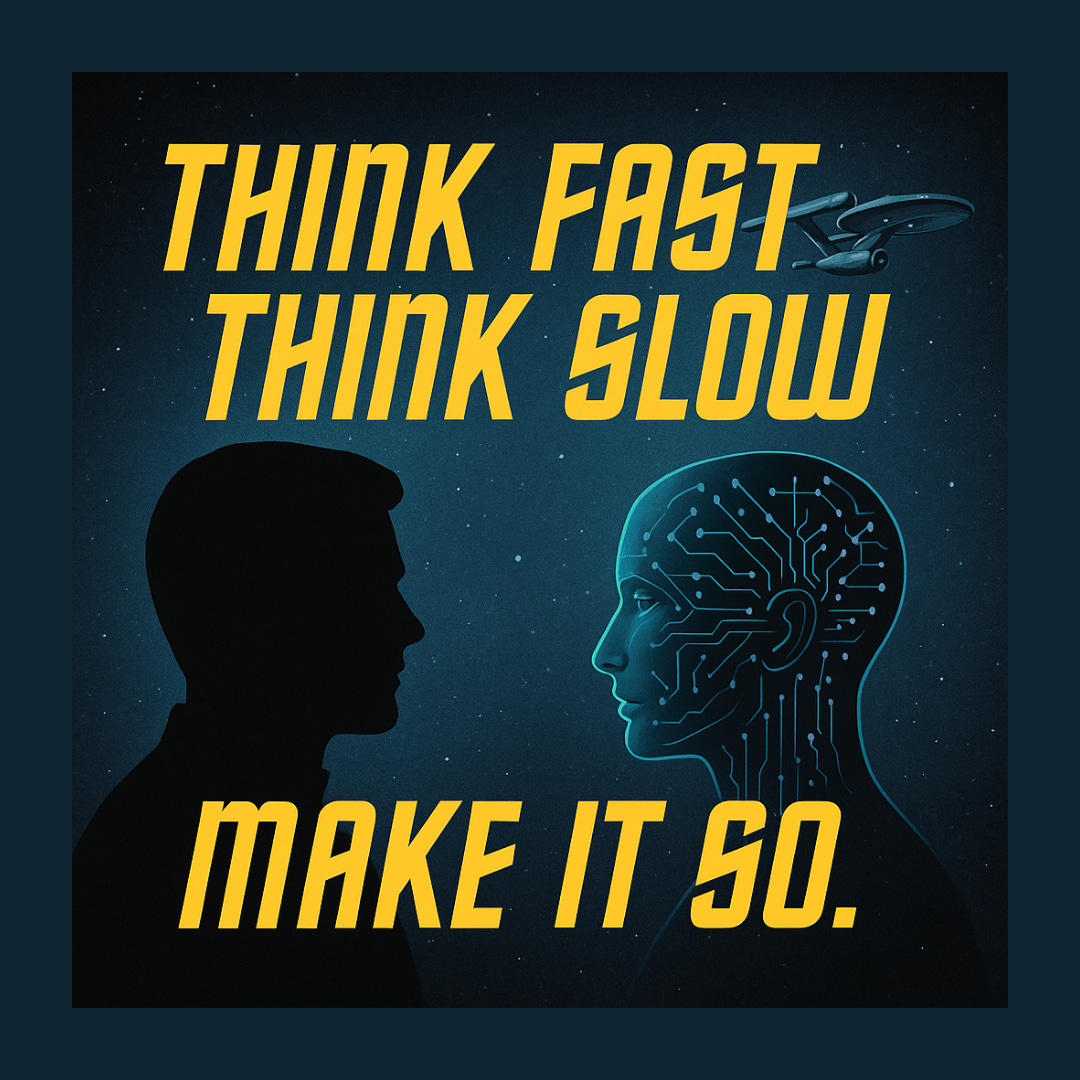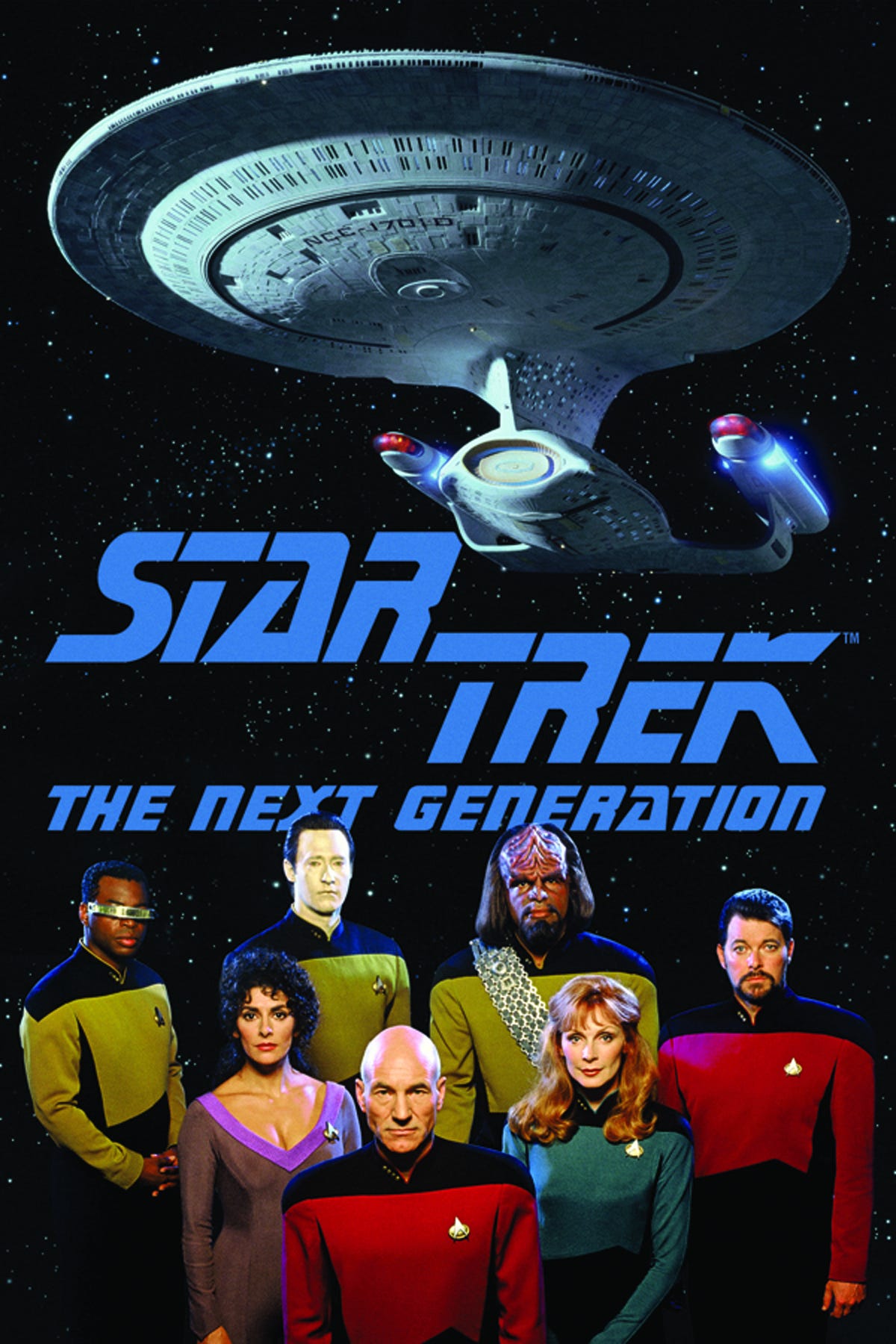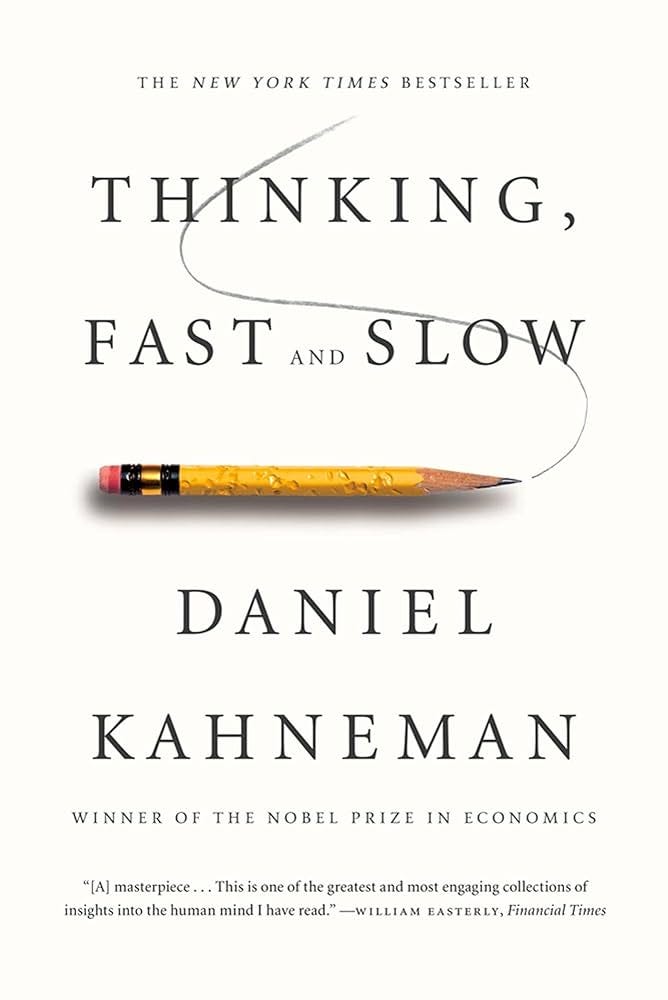Thinking Fast, Thinking Slow & Thinking with AI
Why Star Trek’s AI-Human symbiosis offers the model we need for critical thinking today
On the bridge of the USS Starship Enterprise, Captain Picard often speaks to the computer for help. He’ll ask for a scan of the nebula, a breakdown of ship functions, or probabilities of survival in a hostile encounter. The computer responds instantly, laying out the facts with precision. But notice what never happens: the computer doesn’t make the decision. Picard listens, weighs the data, consults his crew, and then, and only then, chooses a course of action. The responsibility always rests with the captain.
In the world of Star Trek, technology is unimaginably advanced. The ship’s computer can synthesize data faster than any human ever could. But even in the 23rd century, humans remain the ones who think deeply, wrestle with dilemmas, and carry the privilege of choice. The computer supports; it never supplants.
However, today, many of us lean on generative AI not just to provide information, but to draft, argue, or even decide for us. It’s tempting to let the tool do the heavy lifting. Yet if we surrender too much, we risk giving away the very thing that makes us human: our capacity for critical thought.
So here’s the real question: how do we build a future where AI supports rather than replaces our thinking? How do we form a symbiotic relationship with generative AI, the way the crew of the Enterprise partners with their computer, fast analysis paired with human judgment, efficiency paired with wisdom?
The Core Idea: Symbiosis, Not Substitution
I grew up with Star Trek: The Next Generation, introduced by my dad. I still remember being hooked, episode after episode, by the futuristic vision of visions of peace and understanding, the exploration of space, and the curiosity of discovery. The starships, warp drives, and always in the background, that calm, steady voice of the computer, voiced for years by Majel Barrett-Roddenberry, are all awe-inspiring.
What struck me wasn’t just the technology itself, but how the crew used it. The computer could process unimaginable amounts of data, run simulations, and deliver rapid answers. But it never decided. That job always fell to the captain and crew.
Today, with generative AI, we’re living closer than ever to that vision. The first time I used an AI voice feature, it felt almost like I was talking to the Enterprise computer. Not quite as advanced, of course, but still astonishing. AI can do things the computer on Star Trek modeled so well: speed, recall, synthesis, and generating alternative perspectives. But what it can’t provide is the final word.
That’s the crucial difference between how many people are starting to treat AI and what the Starfleet crew does. They rely on the computer for support for an array of occasions, but they choose to wrestle with the dilemmas themselves. They carry the responsibility, the ethics, the creativity. They interpret. They choose.
This is the model we need to adopt in our own relationship with generative AI. Not substitution, but symbiosis. Let the computer handle the fast thinking; we must remain in charge of the deep thinking, the judgment, and the decision-making.
🧠 Why This Balance Matters
Daniel Kahneman’s Thinking, Fast and Slow helps explain why this balance is so important. He describes two modes of thought:
System 1: fast, automatic, intuitive. Great for snap judgments and surface-level connections.
System 2: slow, deliberate, effortful. This is where we analyze, reason, and make careful decisions.
Generative AI thrives in System 1. It excels at rapid recall, pattern recognition, and surface connections. It can generate dozens of ideas, summarize texts, and synthesize perspectives in seconds. But it cannot take on the true burden of System 2, the slow, reflective, emotionally grounded reasoning that makes us human.
If we let AI do too much of that System 2 thinking for us, we risk becoming passive consumers instead of active learners and leaders. Like unused muscles, our critical thinking skills will atrophy over time. But here’s the encouraging truth: muscles can be rebuilt. It’s never too late to reclaim your thinking power.
The key is balance. Use AI as a symbiotic partner. Your “thinking buddy,” as I like to call it. Let it provide raw material, speed, and recall, but don’t outsource the judgment. Critical thinking is the captain’s chair skill: analyzing, deciding, and communicating. In the end, you are still the one giving the orders.
Think about how we used to approach knowledge before AI. We’d Google a fact, or before that, head to the library. But whether the information came from a search bar, a reference desk, or a shelf of books, the principle was the same: knowledge is raw material. What matters is what we do with it.
Treat generative AI the same way. Use it as a tool for research, for sparking ideas, for testing assumptions. But keep the responsibility of decision-making firmly in your own hands. Like Captain Picard, the final choice is always yours.
🧪 Lessons from Research & Star Trek
Nicholas Carr’s The Shallows argues that tools reshape how we think. Hyperlinked, always-on environments train us toward skimming and rapid switching, which taxes working memory and weakens deep focus. That plasticity cuts both ways: used well, tech can sharpen attention; used as a crutch, it dulls it. Treat AI like the library or a tricorder, instrument first, interpreter second.
That maps cleanly onto Kahneman: let AI accelerate System 1 (speed, recall, quick synthesis) while you reserve System 2 for deliberation, judgment, and meaning-making. In other words, ask the computer for readings; you decide the course. The Enterprise model is pro-symbiosis.
There’s a catch: humans tend to over-trust automation. Decades of research on automation bias show we’ll accept machine suggestions and skip our own verification, especially under time pressure. Starfleet does the opposite: officers routinely double-check, debate, and override. Make that your norm.
And today’s AIs do hallucinate. They can produce fluent, confident fabrications. Current research (and even OpenAI’s own work) finds that models are often trained in ways that reward guessing rather than admitting uncertainty; mitigation helps, elimination doesn’t (yet). All the more reason to “verify with sensors,” not vibes.
It’s also worth remembering the voice behind the metaphor: Majel Barrett-Roddenberry was the computer across Trek’s eras, a presence that informs but never commands. Keep that boundary in your head: adviser, not captain.
Starfleet habits to steal
Ask for data, then deliberate. Get summaries, counterpoints, and sources; make the judgment yourself.
Cross-check. Compare AI output with a primary source or two; note what’s missing or uncertain.
Red-team your answer. Prompt the AI (or a colleague) to argue the other side before you decide.
Slow the moment. One paragraph, by you, explaining why you’re choosing X over Y.
The upshot: AI can widen your field of view and compress time. But the captain’s chair, analysis, ethics, and decision still belong to you.
🧭 Practical Ways to Create Symbiosis (Not Substitution)
Generative AI can be an incredible thinking buddy, but only if you stay in the captain’s chair. Here’s a simple bridge-to-bridge protocol that keeps judgment, ethics, and creativity human while letting AI do the speed work.
1) Captain’s Log (Think First, Solo)
Before you open an AI tab, sketch your own idea.
Write a one-paragraph hypothesis or outline in your own words.
Note what you already know vs. what you need.
State your criteria for a good answer (accuracy, feasibility, ethics, impact).
Micro-prompt to yourself:
“I currently believe ___ because ___. I’m unsure about ___. I need evidence on ___.”
2) Sensor Sweep (Use AI for Augmentation)
Now ask AI to gather, not decide.
Pull summaries, definitions, contrasting frameworks, and source leads.
Request 3–5 alternative perspectives you hadn’t considered.
Ask for assumptions and unknowns instead of a single ‘best’ answer.
Micro-prompt to AI:
“Given my hypothesis [paste], list 3 alternative lenses and 2 counterarguments for each, with sources I can verify.”
3) Verification Protocol (Question the Output)
Never take the first reading as gospel.
Cross-check key claims with at least two primary/credible sources.
Highlight what’s missing or where the AI hedges.
If you spot a gap, ask AI to show its work or surface dissenting views.
Checklist: Sources cited? Dates current? Any leaps in logic? What would falsify this?
4) Ready Room Debate (Slow Thinking + Humans)
Deliberate, then invite friction.
Do a journal pass (thinking on paper) to clarify your reasoning.
Red-team your idea: ask AI (or a colleague) to steelman the opposite.
Discuss with a real person to add lived context and ethical nuance.
Micro-prompt to AI:
“Argue the strongest case against my position. What would a domain expert say I’m overlooking?”
5) Prime Directive Check (Judgment & Ethics)
Keep purpose and principles in view.
What values are non-negotiable here?
Who is affected and how might this go wrong?
Does the recommendation still align with your intent and constraints?
6) Take the Conn (Decide, Don’t Delegate)
AI informs; you choose.
Write a 5-sentence decision note: decision, reasons, trade-offs, risks, next step.
If needed, ask AI to help stress-test implementation, not to pick the plan.
Decision note template:
“We will ___ because ___. The main trade-off is ___. Risks include ___, which we’ll mitigate by ___. Next step: ___.”
Mini-habits to keep your thinking muscles strong
Daily 10-minute journal before any AI use.
Two-source rule for every important fact.
No-AI first drafts for key emails, essays, or scripts; use AI only to revise.
Weekly debate hour with a colleague/friend on a live question you care about.
Bottom line: Let the computer run the scans. Let you make the call. That’s the Starfleet way and the surest path to stronger judgment, clearer writing, and better decisions in the age of AI.
Charting the Future
We’re still a long way from the imagined 23rd century, a future Gene Roddenberry dreamed up in Star Trek. And yet, there are lessons worth carrying into our own century. The Enterprise showed us a world where technology makes humans stronger, because humans still lead. That’s the kind of symbiosis we need now with generative AI.
Yes, we already have astonishing AI programs that can take on the “fast thinking,” freeing us for deeper, slower, more ethical reasoning. That’s a hopeful possibility. But we also have to acknowledge the other fork in the road. These same tools could be twisted into dystopian ends, surveillance, manipulation, or decision-making stripped from human hands.
We’re on the cusp of a new era: thrilling, but not without risk. The way forward is to approach it wisely, staying firmly in control of the choices that shape our lives, our work, and our society.
So here’s the question I’ll leave you with: when you use generative AI, are you asking it to think with you or to think instead of you?
Like the crews of the Enterprise, let’s harness AI’s power without surrendering what makes us uniquely human: critical thinking, creativity, and ethical judgment. If we get this balance right, maybe we can build a future worthy of Star Trek’s optimism.
Make it so.






https://open.substack.com/pub/spiralinglight001/p/reflecting-on-the-mystery?utm_source=share&utm_medium=android&r=5vte21